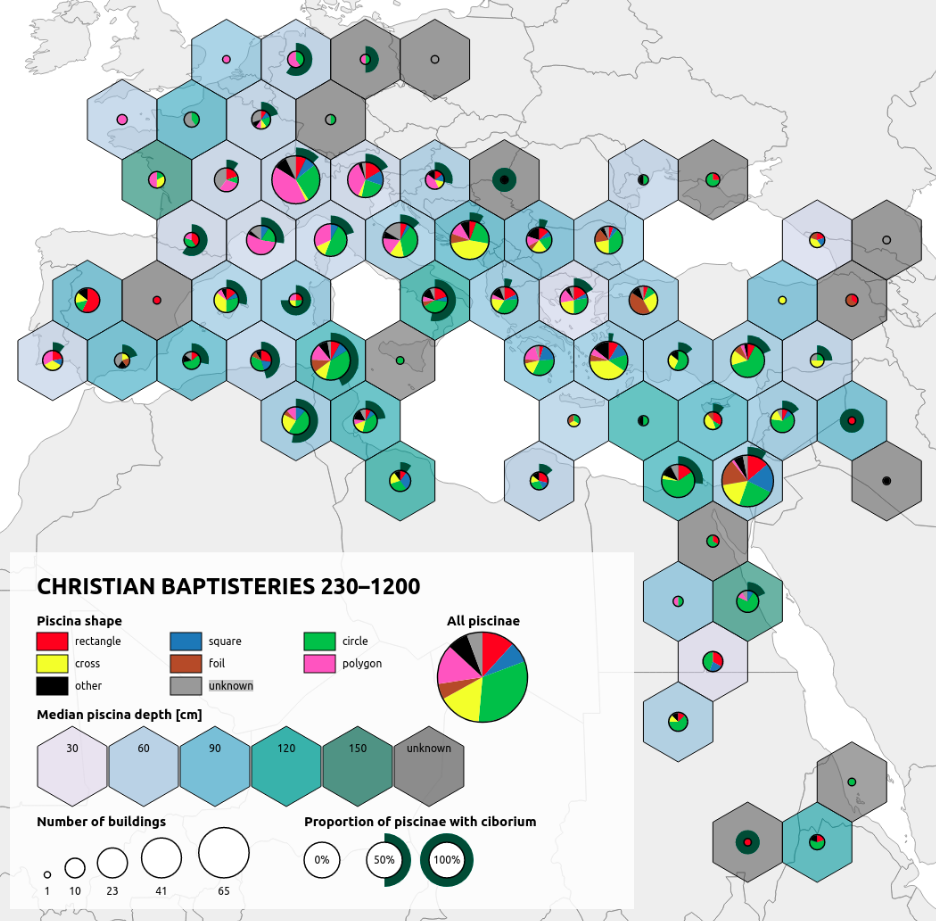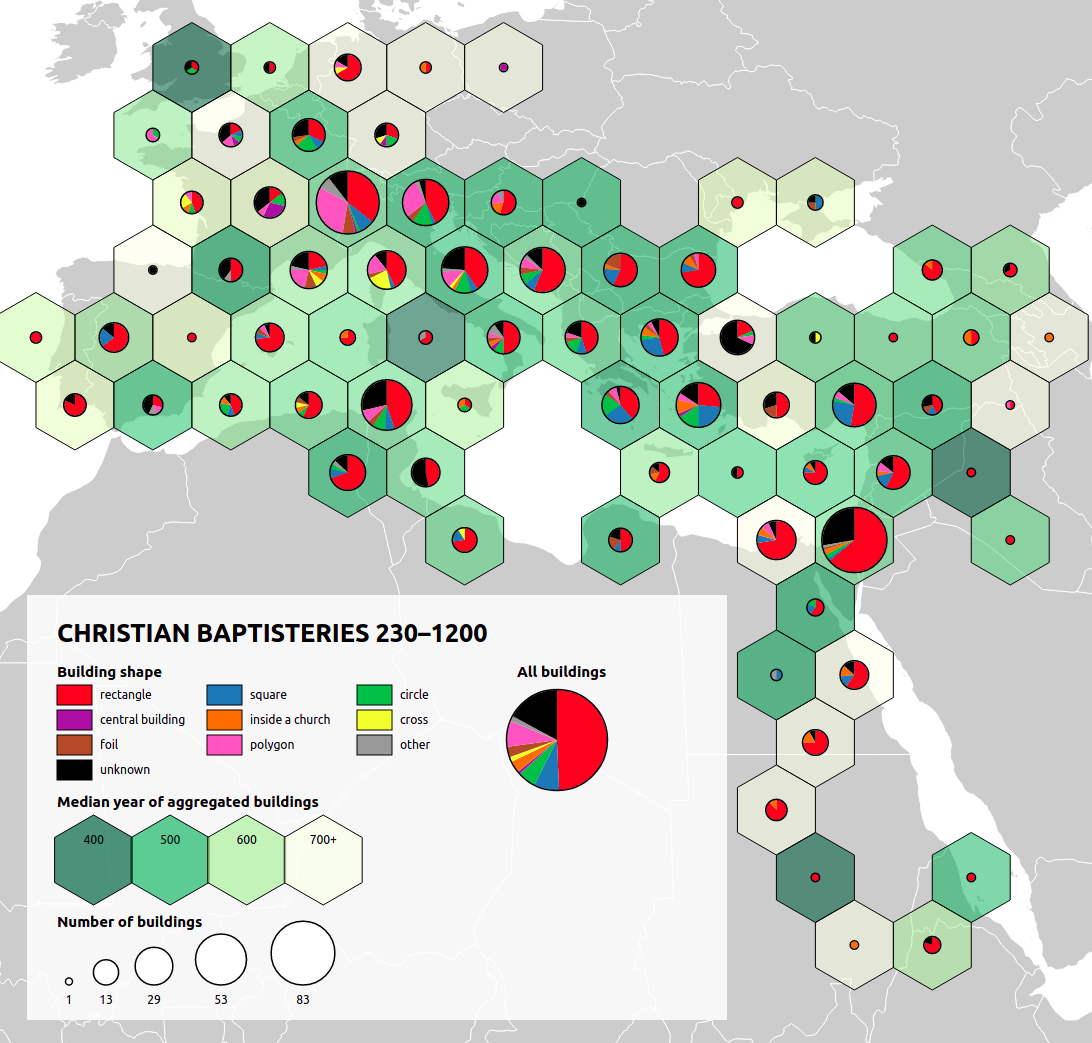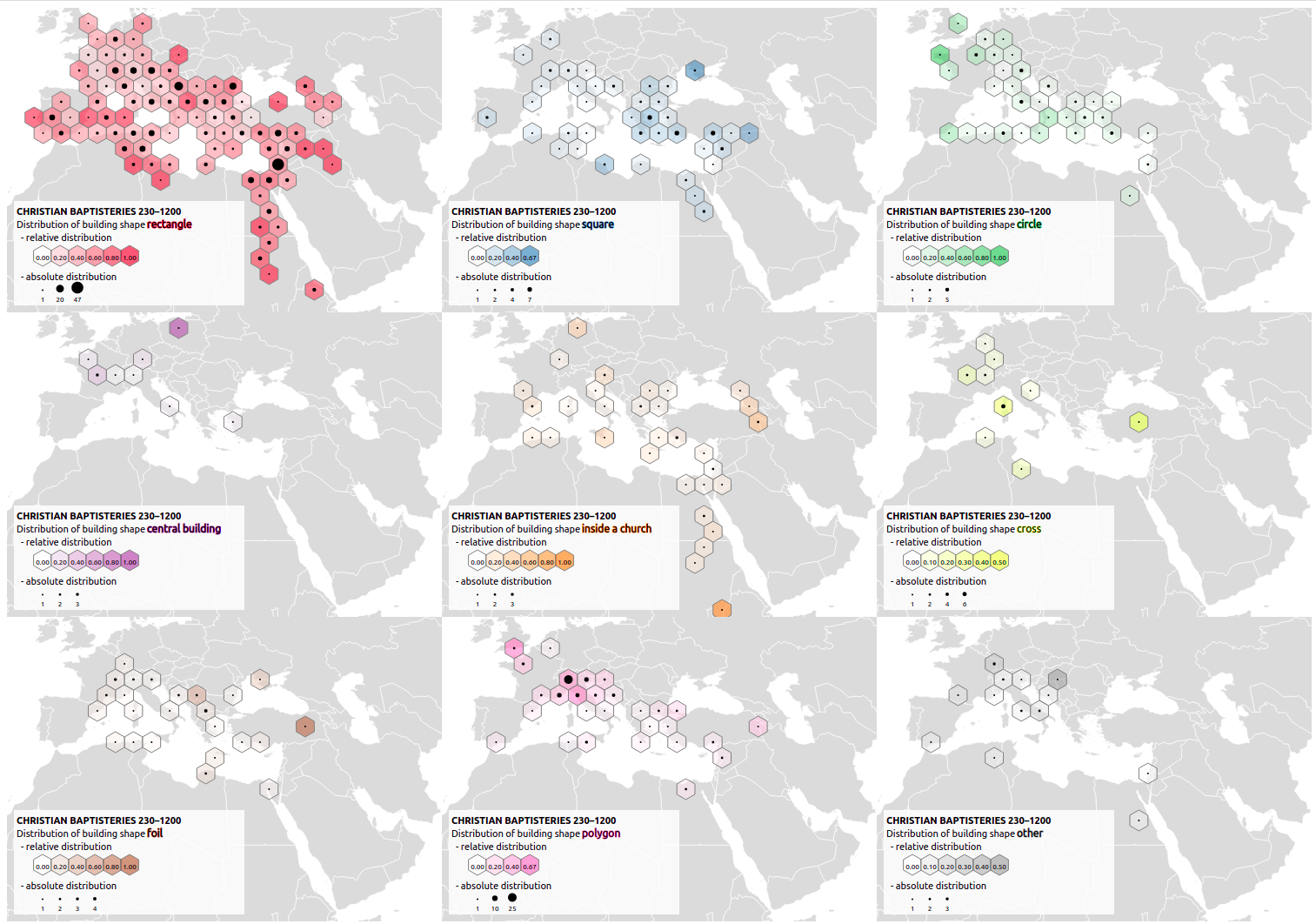http://dissinet.cz/maps/baptisteries/
This interactive map visualizes a database of Christian baptisteries built between the 3rd and 12th centuries. The database is a digital adaptation and formalization of the most complete (as of 2017) catalogue of baptisteries by Sebastian Ristow (Frühchristliche Baptisterien, Münster: Aschendorffsche Verlagsbuchhandlung, 1998) and was compiled by Hana Hořínková in the framework of her B.A. thesis at Masaryk University’s Department for the Study of Religions (2017), supervised by David Zbíral. The map was conceived and created by Adam Mertel (Masaryk University, Department of Geography).
Of all 1067 buildings in Ristow’s catalogue, this visualization takes into account only those whose existence and function as baptisteries is considered certain or very probable and which, at the same time, were successfully localised (778 records, which amounts to 98.1 % of all certain or very probable baptisteries catalogued by Ristow). The localisation has three degrees of certainty:
- precise when the building is localised to a particular settlement
- approximate when the particular settlement was not found but a nearby settlement was
- ambiguous when there were more candidates and only one, the most probable, alternative had to be chosen.
The degree of certainty of the localisation of a particular baptistery can be displayed under the individual record by clicking on the icon of that particular baptistery. This appears with some further data: modern place name, building shape,{' '} terminus post quem (“built after or in”), terminus ante quem (“built before or in”), the mean value between the terminus post quem{' '} and ante quem, piscina shape, and piscina depth.
When zoomed out, the map shows a hexagonal grid. The shade of an individual hexagon denotes the median of the mean values between the terminus post quem and ante quem of all baptisteries in that hexagon; the darker the shade, the earlier the date. When zoomed in, the map shows icons of individual baptisteries or several aggregated baptisteries (in the latter case, their number is displayed). The shape in the icon translates to the shape of the building (see the legend below).
The records displayed can be filtered in two ways:
- (un)checking individual building shapes filters the dataset by building shape
- the timeline can be limited in order to display only a part of the whole dataset whose dates(based on the mean values between the terminus post quem and ante quem) fall between the dates selected by the user. Dragging the slider, or turning the mouse wheel over it allows the user to move through time and see new baptisteries appear.
When zooming out to the level of hexagons and moving the slider, the shade of the hexagons also changes, showing the change in the calculated median of the mean dates of baptisteries in that hexagon.
The base map can be selected under the icon in the upper right corner.
three static maps were produced:
- building shape - small multiples
- building shape - hexgrid + pie charts
- piscina - hexgrid + pie charts
RISTOW, S., A. MERTEL, H. HOŘÍNKOVÁ, D. ZBÍRAL (2017). Christian baptisteries: interactive map (version 1.0.1). Available online at <http://dissinet.cz/maps/baptisteries/>.




